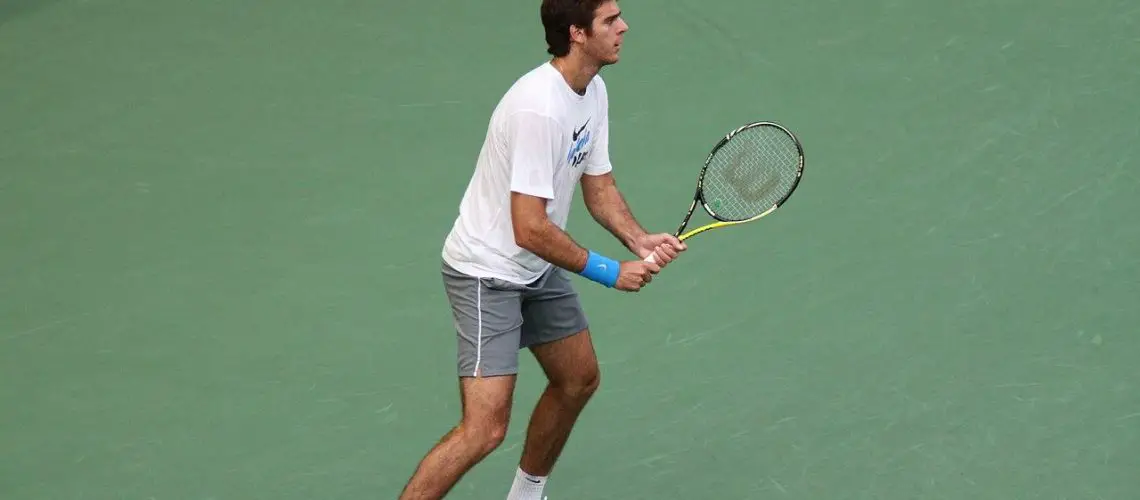We may earn money or products from the companies mentioned in this post.
Brief Overview of Tennis

Tennis, a popular sport played worldwide, has a rich history that dates back to the 19th century Its origins can be traced to various games played in ancient civilizations such as Egypt and Greece However, the modern version of tennis that we know today evolved from a game called “real tennis” played in medieval Europe
Scoring and rules play a vital role in tennis, ensuring fair competition and determining the outcome of matches The objective is simple: players aim to hit the ball over the net and into their opponent’s court in a way that prevents them from returning it successfully Each match consists of sets, which are further divided into games and points
Tiebreakers in Tennis

A tiebreaker is an essential component of tennis matches, used to determine the winner when the score becomes tied at a certain point during the set It adds an extra element of excitement and tension to the game, creating thrilling moments for both players and spectators alike
The purpose of a tiebreaker is to prevent extended sets that could potentially go on indefinitely due to deuce games (when both players reach 40-40). Instead of playing multiple deuce games until one player wins by two clear points, a tiebreaker allows for a quicker resolution
Situations When a Tiebreaker Is Required
A tiebreaker becomes necessary under specific circumstances within a set In most professional tournaments, when the score reaches 6-6 in games, or 1-1 in sets for women’s Grand Slam events, or 2-2 in sets for men’s Grand Slam events, a tiebreaker is initiated
During this crucial phase of the match, each player serves alternately for one point at a time until one player accumulates seven points with a margin of at least two points The player who serves first in the tiebreaker is determined by a coin toss or other predetermined method
Overall, tiebreakers not only provide a fair and efficient way to determine the winner of a set but also add an extra layer of excitement to tennis matches They showcase players’ mental and physical abilities under pressure and often lead to thrilling comebacks or intense battles that keep fans on the edge of their seats
The mechanics of playing a tiebreaker

When it comes to tennis, tiebreakers can add an extra level of excitement and suspense to a match Understanding the mechanics of playing a tiebreaker is essential for any player looking to navigate this crucial phase successfully
Understanding the point system
Before diving into the intricacies of a tiebreaker, let’s first grasp the basics of the point system In regular gameplay, points are scored as 0, 15, 30, and 40 However, during a tiebreaker, things work slightly differently
1
Basic point structure (0,15,30,40):
The same scoring system applies during a tiebreaker as in regular gameplay Each point won will be reflected on the scoreboard accordingly
2
Deuce and advantage points:
In case both players reach six games each in a set (commonly known as 6-6), they enter into a tiebreaker situation However, if the score reaches deuce (40-40) during this phase, advantage points come into play just like in regular gameplay
How to initiate a tiebreaker
To initiate a tiebreaker scenario in tennis matches, certain score requirements must be met by both players involved
1
Score requirements (6-6 in most cases):
Typically, when both players have won six games each in a set (referred to as 6-6), it’s time for a tiebreaker This ensures that there is parity between both competitors before entering this decisive phase
2
Informing your opponent and the umpire:
It is important to communicate with your opponent and, if applicable, the umpire about the commencement of the tiebreaker This ensures that all parties involved are aware and ready to transition into this high-stakes phase
The structure of a tiebreaker
Now that we’ve established how to initiate a tiebreaker, let’s delve into its structure and rules
1
Starting with one point for server A:
In a tiebreaker, the server begins with one point already on their side of the scoreboard
a)
Switching servers after every two points:
To maintain fairness, servers alternate after every two points in a tiebreaker This allows both players an equal opportunity to showcase their skills
b)
Alternating sides after every six points:
After every six points in a tiebreaker (or at multiples of six), players switch sides to ensure no advantage is gained from external factors like wind or court conditions
c)
Continuing until one player achieves seven points (with at least a two-point lead):
The tiebreaker continues until one player reaches seven points with a minimum two-point lead over their opponent This guarantees that victory is claimed convincingly, without any ambiguity
i)
If no two-point lead is achieved:
Should neither player establish a two-point lead once reaching seven points, the play extends until such a lead is obtained This ensures an exciting battle where each point could be the game-changer
Tiebreaker strategies and tips

The importance of first serves in tiebreakers
In a tiebreaker, every point matters The first serve becomes crucial as it sets the tone for the entire sequence A well-executed first serve can give you an immediate advantage and put pressure on your opponent It’s all about starting strong and gaining momentum right from the beginning
Key factors for successful serving:
-
Placement:
Precision is key when it comes to placing your serves Aim for the corners or exploit your opponent’s weaker side to make it harder for them to return with power -
Speed variation:
Mix up your serve speeds to keep your opponent guessing Alternate between powerful serves and slower, more strategic ones, making it difficult for them to anticipate your next move -
Consistency:
Consistency is crucial in tiebreakers Focus on hitting consistent serves that land within the service box, minimizing unforced errors and giving yourself a better chance of winning points
Playing aggressively but smartly during the tiebreaker
A tiebreaker demands a fine balance between aggression and intelligence Here are some tips to help you navigate this high-pressure situation:
-
Attacking your opponents’ weaknesses:
Identify any weaknesses in your opponent’s game and exploit them during the tiebreaker Target their vulnerable areas with strategic shots that force errors or put them on the defensive -
Focusing on high-percentage shots:
In a tense situation like a tiebreaker, it’s important to stick to shots that you are confident in executing consistently Avoid taking unnecessary risks and focus on shots that have a higher probability of success -
Maintaining composure under pressure:
The mental game is crucial in tiebreakers Stay calm, composed, and focused on your game plan Don’t let the pressure get to you and make rash decisions Trust your abilities and stay determined until the last point
By implementing these strategies and tips, you can increase your chances of coming out victorious in tiebreakers Remember, it’s not just about skill, but also about mindset and adaptability when it comes to thriving in these intense situations
Conclusion: Embracing the challenge of tiebreakers in tennis

In this article, we have explored the intricacies of tiebreakers in tennis and discovered valuable insights that can help players navigate through these intense moments on the court Let’s summarize the key takeaways from each section:
Introduction: Importance of understanding tiebreakers in tennis
Tiebreakers are crucial moments in a match that can determine its outcome By familiarizing ourselves with the rules and strategies surrounding tiebreakers, players can approach them with confidence and a clear understanding of what it takes to succeed
Mechanics: Mastering the structure and rules governing the tiebreaker
The structure of a tiebreaker follows a specific set of rules, including scoring, serving rotation, and changeover procedures By mastering these mechanics, players can make informed decisions and capitalize on opportunities during this high-pressure phase of play
Strategies and tips: Employing effective tactics to gain an advantage
There are various strategies and tips that players can employ to gain an edge in tiebreakers These include staying mentally focused, playing to your strengths, adapting your game plan when necessary, and maintaining composure under pressure By implementing these tactics, players increase their chances of coming out on top
To all aspiring tennis players out there facing tiebreakers, remember this: embrace the challenge! Tiebreakers are thrilling opportunities to showcase your skills and mental fortitude Approach them with confidence and determination, knowing that you have prepared yourself both physically and mentally
Lastly, practice is key when it comes to successfully navigating tiebreakers The more experience you gain by engaging in practice matches or participating in competitive games where every point counts, the better equipped you will be to handle the pressure and make smart decisions when it matters most
So, next time you find yourself in a tiebreaker situation, approach it with excitement rather than apprehension Embrace the challenge, apply your knowledge of tiebreaker mechanics and strategies, and trust in your abilities Remember, tiebreakers are not obstacles to fear but opportunities to seize victory!
Useful Links

8 Tips To Win More Super Tie Breakers
Tennis Tie-breaks Made Easy
Tie-Break Tennis Rules
Guide to Tennis Tie Breaks
Rules For Playing a 10 Point Tie Break
What is a super tiebreak in tennis, rules, points and how is it …
How to play a tiebreaker
12-Point Tie-Break
Tiebreaker Rules and Scoring System at the 2023 …
Tiebreaker rules and scoring system at the 2022 US Open
BBC SPORT | Tennis | Rules and Equipment | Scoring basics …
Longest tiebreaker in tennis
Mixed Doubles Tennis Rules
Tennis final set tie-break rules explained: Why changes …
The COMAN Tiebreak Procedure:
What’s a Tennis Tiebreaker? How Do they Work?
Rules for Playing 10-Point Match Tiebreaker in Tennis
How to Play a Tiebreaker in Tennis – Tennis Blog
How To Record A Tiebreak – Support – Universal Tennis






